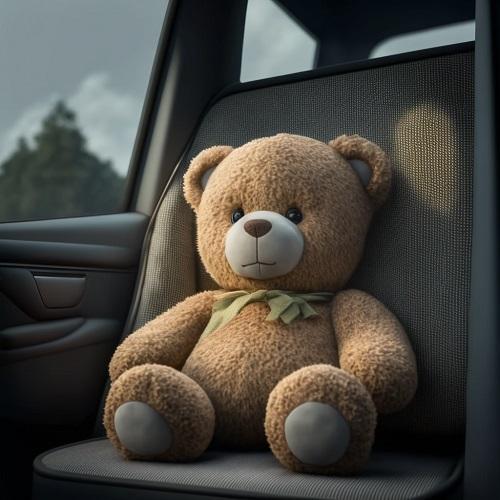Leaving a child or a baby in a hot car can have tragic consequences. According to the National Safety Council (NSC), an average of 37 children die in hot cars each year in the United States from heat-related deaths after being trapped inside vehicles. In addition, the National Highway Traffic Safety Administration (NHTSA) reports that from 1998 to 2019, a total of 855 children died in the United States from heatstroke in vehicles. Tragically, these deaths are preventable and are caused by the child being left in a vehicle, unintentionally or otherwise.
The statistics are even more alarming when we take into account the number of children who are injured from heatstroke after being left in a hot car. The NHTSA reports that from 1998 to 2019, an estimated 5,209 children were rescued from vehicles after being left alone or trapped. These children suffered from a range of injuries, including heatstroke, dehydration, and hyperthermia. These numbers highlight the importance of taking extra precautions to protect children from the dangers of hot cars, and the importance of creating reminders, such as the examples provided earlier, to ensure that children are never left alone in a hot car.
- Never leave a child alone in a car: Even if the windows are cracked or the car is parked in the shade, the temperature inside a car can quickly become dangerous. Always take your child with you when you leave the car.
- Create a reminder: Place a stuffed animal or other item in the car seat when your child is in it. Once you’ve arrived at your destination, move the item to the front seat as a reminder that your child is in the back. Other reminders include: setting a reminder on your phone or smartwatch to check the backseat before leaving the car; placing a purse, briefcase, or other item that you always take with you in the backseat with the child; keeping a stuffed animal or other toy in the front seat when the child is not in the car, and moving it to the backseat when the child is in the car; keeping a note or sign on the dashboard that says “Baby in backseat”; asking a daycare provider, spouse, or other responsible person to call or text you when the child is dropped off or picked up; using a car seat sensor pad that alerts you when a child is left in a car seat.
- Check the back seat: Always check the back seat before leaving your car, and make sure all passengers, including children, have exited the vehicle.
- Use technology: Many new cars come equipped with rear seat reminder systems, which can alert you if a child is still in the back seat. general Motors offers a rear seat reminder system on many of its models, including the Chevrolet Traverse, GMC Acadia, and Buick Enclave; the Nissan Armada, Murano, and Rogue come with the Rear Door Alert system; the Ford Expedition and Lincoln Navigator come equipped with the Rear Seat Reminder feature; Honda’s rear seat reminder system is available on the Odyssey minivan, Ridgeline pickup, and Pilot SUV; some Toyota models such as the Sienna, RAV4, and Camry come with a Rear seat reminder system; Hyundai has Rear Occupant Alert for its SUV models such as the Santa Fe, Palisade and Tucson; the Mercedes-Benz E-Class and S-Class have a rear seat reminder that warns the driver that there is someone in the back seat before they leave the car; some Volvo models such as the V60, V90, and S90 have a rear seat reminder system, which alerts the driver if a rear seat passenger is still in the car. It’s important to note that this is not an exhaustive list, as technology is evolving and more models are coming with this feature. Always check the features of the car before buying, or consult the car’s manual to know if it has this feature.
- Keep car keys out of reach: Keep car keys out of reach of children, so they can’t accidentally lock themselves in the car.
- Be extra cautious during extreme heat: The temperature inside a car can rise quickly, even on a mild day. Be extra cautious during extreme heat waves, and never leave a child alone in a car for any amount of time.
- Use window shades: Use window shades or coverings to block out the sun and keep the car cooler.
- Dress children in lightweight clothing: Dress children in lightweight, breathable clothing during hot weather to help keep them cool. Avoid dressing them in heavy, insulated clothing or extra layers.
- Educate others: Make sure everyone who transports your child, such as grandparents or babysitters, is aware of the dangers of hot cars and knows the safety tips.
- Call for help: If you see a child alone in a hot car, call 911 immediately. Every second counts in preventing a tragedy.
It’s important to remember that children’s bodies heat up three to five times faster than adults’ bodies and they can’t regulate their body temperature as well. By following these tips, parents and caregivers can take an active role in preventing heat stroke and other heat-related illnesses in young children and babies. Let’s work together to keep our little ones safe and cool this summer.










